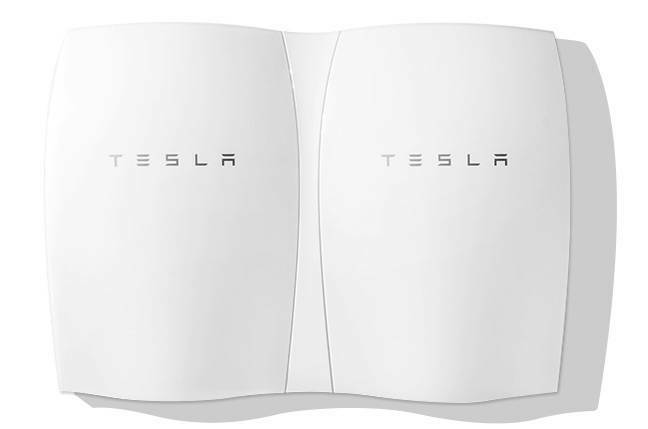Electric car company Tesla recently launched a battery to power homes, Powerwall, and the firm has made some bold claims about its potential ahead of going to market, but is the hype justified?
 According to Tesla, the Powerwall battery will allow solar panel-equipped homes to go ‘off grid’, or consumers to save money by charging the battery at off-peak times and using it as a power source during periods of higher grid use, when electricity prices are substantially higher.
According to Tesla, the Powerwall battery will allow solar panel-equipped homes to go ‘off grid’, or consumers to save money by charging the battery at off-peak times and using it as a power source during periods of higher grid use, when electricity prices are substantially higher.
Our colleagues at the Australian Science Media Centre held an online briefing with experts to discuss the Powerwall battery and its potential impact.
You can watch playback of the briefing here.
Utility company Vector has formed a partnership with Telsa to sell the batteries, which will be priced from US$3500.
We asked a number of New Zealand experts what they thought about the Tesla battery.
Dr Rebecca Ford, Deputy Director & Senior Research Fellow, Centre for Sustainability, University of Otago, comments:
“At this point there remains uncertainly about the uptake and use of Tesla’s batteries, but with anticipated changes to electricity prices (and those changes already occurring such as time of use tariffs provided by Flick Energy) such energy storage solutions that can allow households to buy power when it is cheap and use it when they want might become increasingly attractive.
“They may also be an interesting add on for people interesting in generating their own energy. We are currently seeing an exponential growth in residential photovoltaic installations, and with power companies cutting buy-back rates, the use of batteries to store surplus energy could be rather appealing. It would also help satisfy consumer desires to become more independent of their power companies. However, should this happen it will introduce complexities around existing charging structures for the use of distribution networks, and could even lead to stranded assets should uptake of photovoltaic be substantial in certain areas.”
Dr Allan Miller, Electric Power Engineering Centre Director, University of Canterbury, comments:
“The batteries have the potential to substantially change electricity use patterns, primarily by storing electricity when the price is low, and supplying a household when the price is high. The obvious example is storing energy during the night and using energy from the battery during the day. In turn this would reduce a households electricity bill and potentially smooth out the variations in load on the grid. They could also be used to store energy from photovoltaic solar panels to supply a household.
“However batteries are not at a suitable price for this yet. With certain assumptions about the ’round-trip’ efficiency, limited depth of cycle, battery cost, battery life, and maintenance costs, the effective cost of cycling energy through the battery over its life is very high. It is a lot higher than the difference between day and night rates, and between retail and photovoltaic buy-back rates, which means that the battery is not yet economical. Nevertheless, these batteries show promise of what is to come in household consumer energy technology, and technology to help distribution companies to manage their peak load and therefore the cost of electricity distribution.”
“In the immediate future large uptake is unlikely. Just as we have seen with photovoltaic solar power and electric vehicles, it is likely that innovators, followed by early adopters, will try the technology out. When the price of this technology falls to a price where it is economically attractive as an investment, there is likely to be large uptake.”
Dr Nirmal Nair, Department of Electrical & Computer Engineering, University of Auckland, comments:
“Tesla’s Powerwall is a consumer product providing 8 hour “UPS” (uninterrupted power supply) for their home electricity needs during power outages. Like their Tesla Electric Vehicle, the initial consumer uptake is likely to be early adopters who are interested in new technologies, getting more value from existing solar photovoltaic generation and requiring very high security of supply. Tesla’s Powerpack, the company’s utility scale storage option will accelerate global trials by utilities who having been looking for reasonably sized and competitive battery products.”
Prof Tek Tjing Lie, Head of Department of Electrical and Electronic Engineering, Auckland University of Technology, comments:
“It is well known that battery (energy storage) plays a very significant role for the success of implementation of renewable energy sources. Battery will provide flexibility for the electricity user or utility operator to utilise the electricity energy. Moreover, battery will increase the reliability of electricity supply. The only downside has been the excessive price, limited capacity, size, and limited life cycle. The Tesla Powerwall battery seems to be very promising.
“From the given specifications, it seems to be the solution to those common problems with the existing battery technology. The Powerwell battery could be considered as a game changer for the residential homes with rooftop Photovoltaic panels.
“However, I still doubt about the life cycle of the battery because it will be shorten due to the charging and discharging activities. Thus, I do not think it will revolutionize the way the electricity is used. In addition, I think it will change the uptake of this technology in New Zealand if (i) the electricity tariff will go unreasonably high, (ii) the feed-in tariff is attractive and (iii) the cost of the battery is insignificant compared to the cost of the whole rooftop PV panels (Note: Battery will need to be replaced within less than 10 years).”